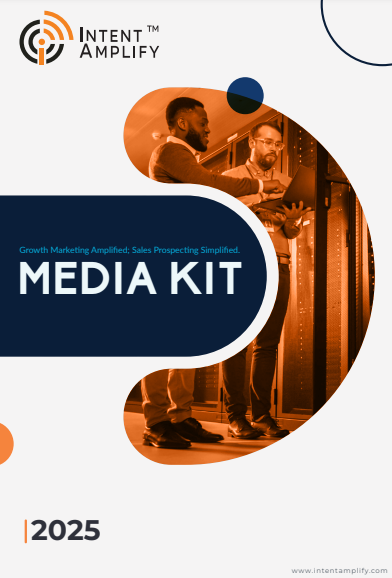
How to Create High-Impact Technical Papers and White Papers for B2B Growth
- Last updated on: August 22, 2022
Technical papers and white papers are knowledge-based reports that make your company a respected authority. Designed to educate decision-makers, these assets deliver detailed information on tough problems, marketplace concerns, and creative solutions—in a non-blatantly selling a product or service format. When done professionally, white papers can make your company a market thought leader.
While marketing brochures, good white papers present factual information, effective recommendations, and intelligent observations. Marketing a specific product as part of the content lowers credibility and undermines its potential in B2B selling.
The Purpose of White Papers in B2B Marketing
White papers educate, not sell. They provide a fair view of an issue and can suggest solutions of a kind, but not named products. This objective stance is necessary to build trust and maintain credibility. Irrespective of whether you’re researching new technologies, evaluating business trends, or offering problem-solving paradigms, white papers offer your readers valuable insights. White papers can break down complex concepts, present original research, or identify lessons learned through customer experience. These are some of the primary strategies for producing effective white papers that convert attention to authority.
1. Choose a Topic Relevant to Your Brand and Audience
Prioritize themes that resonate with your target customers and correspond to your brand positioning. Research your audience’s pain points, interests, and industry-related problems. It isn’t worth creating a white paper that fails to address a relevant problem or create value for your audience.
2. Craft a Clear, Compelling Title
Your title should be simple, descriptive, and engaging, without jargon or overused buzzwords. Consider the following examples:
- “Preventing Data Breaches in the Hybrid Workplace”
- “AI in Cybersecurity: Trends to Watch in 2025”
Adding numbers, verbs, or questions can make your title stand out in search results.
3. Start with a Defining Overview
Start your white paper with a concise summary telling your readers to whom this document is addressed and what it’s about. Whether your prospective readers are CIOs, operations executives, or product managers, express the relevance explicitly at the outset in order to capture their interest.
4. Offer In-Depth Insights, Not Sales Blurbs
White papers should give factual, research-backed content, such as:
- Industry trends
- Market forecasts
- Third-party analysis and studies
- Expert opinions
Use case analyses – Don’t use promotional language. Your credibility will come from the quality of your thinking, not a sales pitch.
5. Use an Inviting, Reader-Friendly Layout
A white paper should be 4 to 15 pages. To make it more readable:
- Use headings, subheadings, and bullets
- Highlight key points in pull quotes or boxes
- Use charts, graphs, or infographics to present your point
A design that is pleasing to the eye makes it easier to understand and keeps readers engaged throughout.
6. Conclude with Actionable Takeaways
End with a concise summary of the key takeaways and offer guidance on what action to take next. Let readers know how they may be able to apply what they’ve learned. This could seamlessly transition into how your business can support their journey, without sounding like an advertisement.
7. Include an “About” Section at the End
Whereas your white paper’s content needs to be brand-free, you can include a short section towards the end with:
- Your company logo and name
- Author or contributors’ information
- Contact information and link to your website
This enables brand association without compromising on the informative aspect of the content.
How to Distribute White Papers for Maximum Reach
Creating a successful white paper is merely the beginning. Without a deliberate distribution strategy, even the most vital content can go unnoticed. Strategic promotion will increase its visibility and lead generation effectiveness in the long run. White papers are long-term marketing assets. When used effectively, they can create activity through a variety of channels for months or even years. Here’s how to promote them successfully:
Here are 10 Tried-and-True Methods for Spreading Your White Paper:
White papers are only as effective as their distribution. To drive meaningful engagement and leads, you need a strategic promotion plan. In this guide, discover 10 proven methods to amplify your white paper’s reach, attract the right audience, and maximize its impact across digital B2B marketing channels.
1. Host it behind a Gated Landing Page
Ask for business contact information before opening up access. Consider excluding personal email addresses to further qualify leads.
2. Create an SEO-Optimized Landing Page
Create a specialty page that’s long-tail keyword-optimized for the topic. Include meta tags, organized headers, and internal links.
3. Launch a Focused PPC Campaign
Use Google Ads or LinkedIn Ads to drive traffic from your target market to your white paper landing page.
4. Reuse It for Industry Presentations
Reshoot the major findings as conference or industry event slides to get the most visibility.
5. Use it as the Foundation for a Webinar
Present a session breaking down the major findings, and sell it to current and potential clients.
6. Conduct a “Lunch and Learn” Session
Invite 15–20 potential clients for an informal lunchtime discussion based on the white paper results.
7. Issue a Press Release
Release it. Send out a press release to industry press and targeted editorial boards.
8. Summarize it in a Blog Post
Publish highlights on your blog site and guest blogging sites with backlinks to the full download page.
9. Promote on Social Media
Share snippets, stats, or visual quotes of the white paper on LinkedIn, Twitter, etc., along with a direct download link.
10. Email It to Your Subscriber List
Release the white paper in newsletters, welcome sequences, or onboarding material for new leads.
White papers are one of the most trusted assets in B2B marketing. Written with purpose and strategically distributed, they make your firm a problem-solver and thought leader, without the heavy sell.
Struggling to Create White Papers That Convert?
Let Intent Amplify craft research-backed content that drives engagement and qualified B2B leads.
Explore our content solutions
FAQs
1. What is the secret to a successful white paper?
A good white paper offers objective observations, solves a related issue, and is thoroughly researched. It avoids self-promotion and is strategically published.
2. How long should a white paper be?
Typically 4 to 15 pages, depending on the complexity of the topic.
3. Can white papers generate leads?
Yes. When marketed or gated properly, white papers can generate high-quality leads by attracting decision-makers looking for solutions.
4. How frequently should companies be issuing white papers?
Best to do it quarterly to maintain visibility, but it depends on your industry and budget.
5. Are white papers still useful today in 2025?
Yes. With the rise of AI and noise online, thorough, genuine materials such as white papers breakthrough and support informed decisions.




